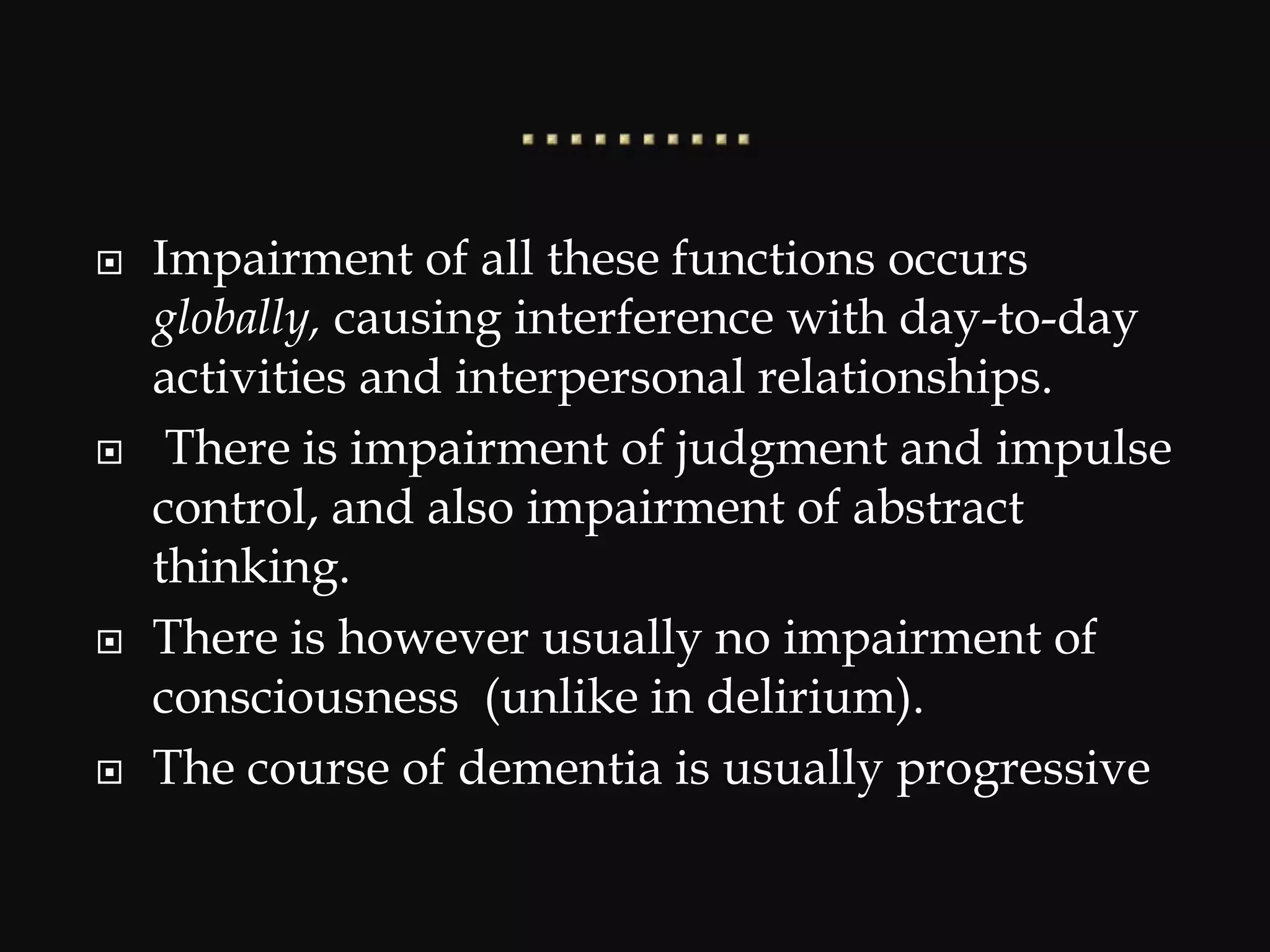This document provides an overview of dementia, including its definition, terminology, epidemiology, causes, stages, clinical features, classification, diagnosis, and investigations. Some key points include:
- Dementia is characterized by impairment of intellectual functions, memory, and personality. It interferes with daily life.
- Alzheimer's disease is the most common cause, accounting for around 70% of cases. Vascular dementia is the second most common.
- Symptoms vary depending on the area of brain affected but generally include cognitive decline and neurological or psychiatric features.
- Diagnosis involves ruling out other causes through examinations, imaging, and lab tests. Unfortunately, dementia is usually progressive and currently incurable.







































